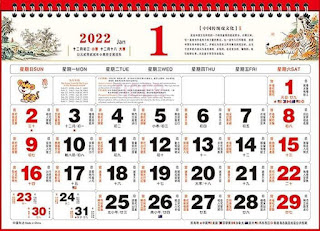Introduction
In the realm of cultural treasures, few artifacts rival the enduring legacy and intricate workings of the Chinese calendar. Rooted in millennia-old traditions, the Chinese calendar not only serves as a practical timekeeping system but also embodies profound cultural beliefs, agricultural practices, and celestial observations. In this blog post, we delve into the fascinating world of the Chinese calendar, exploring its history, structure, cultural significance, and modern-day relevance.
Origins and Development
The origins of the Chinese calendar can be traced back to ancient astronomical observations and agricultural practices. The earliest versions of the calendar emerged during the Shang Dynasty (1600–1046 BCE), with rudimentary systems based on lunar cycles and the movement of celestial bodies. Over time, these early calendars evolved, incorporating elements from various philosophical and religious traditions, including Confucianism, Taoism, and Buddhism.
One of the defining features of the Chinese calendar is its use of a lunisolar system, which combines lunar months with solar years. This intricate system allows for the synchronization of lunar phases with the solar seasons, resulting in a more accurate representation of time than either a purely lunar or solar calendar.
Structure of the Chinese Calendar
The Chinese calendar consists of several key components, each with its own significance and symbolism:
1. Lunar Months: Unlike the Gregorian calendar, which is based solely on the solar year, the Chinese calendar follows a lunar cycle, with each month beginning on the day of the new moon and lasting until the next new moon. Each lunar month is divided into 29 or 30 days, depending on the phase of the moon.
2. Solar Terms: In addition to lunar months, the Chinese calendar also includes 24 solar terms, or jieqi, which mark the changing seasons and agricultural activities. These solar terms, such as the Spring Equinox and Grain Rain, are based on the sun's position relative to the celestial equator and play a crucial role in guiding farming practices and cultural rituals.
3. Zodiac Animals: Perhaps the most iconic feature of the Chinese calendar is the 12-year cycle of zodiac animals, with each year associated with a specific animal sign. According to legend, the order of the zodiac animals was determined by a race organized by the Jade Emperor, with the rat, ox, tiger, rabbit, dragon, snake, horse, goat, monkey, rooster, dog, and pig emerging as the winners.
Cultural Significance
Beyond its practical utility as a timekeeping system, the Chinese calendar holds deep cultural significance and is intertwined with various aspects of Chinese life and tradition:
1. Festivals and Celebrations: Many of China's most beloved festivals and celebrations, such as Chinese New Year (Spring Festival), Mid-Autumn Festival, and Dragon Boat Festival, are determined by the lunar calendar. These occasions provide opportunities for families to reunite, honor ancestors, and express cultural identity through food, music, and rituals.
2. Astrology and Divination: The zodiac animals and their associated characteristics play a prominent role in Chinese astrology and divination practices. Many people consult astrologers and fortune-tellers to gain insights into their personalities, relationships, and future prospects based on their zodiac signs.
3. Feng Shui: The Chinese calendar also influences the practice of feng shui, an ancient system of geomancy that emphasizes the harmonious arrangement of space and objects to promote health, prosperity, and good fortune. Feng shui practitioners often consult the calendar when determining auspicious dates for important events such as weddings, housewarmings, and business ventures.
Modern-Day Relevance
In today's fast-paced world, the Chinese calendar continues to exert a profound influence on Chinese society, both domestically and internationally:
1. Cultural Identity: Despite the prevalence of the Gregorian calendar in everyday life, the Chinese calendar remains a potent symbol of cultural identity and heritage for millions of people around the world. Immigrants and diaspora communities often maintain traditions associated with the lunar calendar as a way of preserving their cultural roots and passing down ancestral knowledge to future generations.
2. Economic Impact: The timing of Chinese New Year, in particular, has significant economic implications, not only in China but also in countries with large Chinese populations. The holiday triggers a massive wave of travel, shopping, and gift-giving, driving consumer spending and shaping business strategies across industries.
3. Global Influence: With the rise of China as a global economic and cultural power, interest in the Chinese calendar has surged worldwide. Western audiences have embraced aspects of Chinese astrology, cuisine, and holiday traditions, contributing to the cross-cultural exchange and appreciation of Chinese culture.


.jpeg)
.jpeg)

.jpeg)
.jpeg)




0 Comments